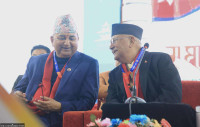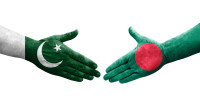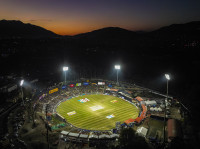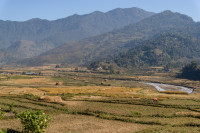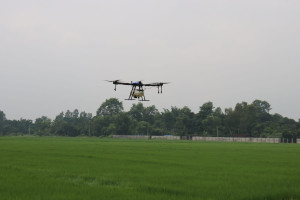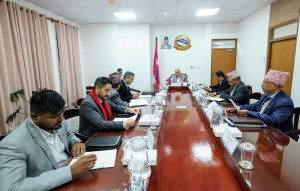Valley
Cautious optimism
Prime Minister Sher Bahadur Deuba has dubbed his five-day visit to India successful. However, in reality, this visit has no substantive outcome.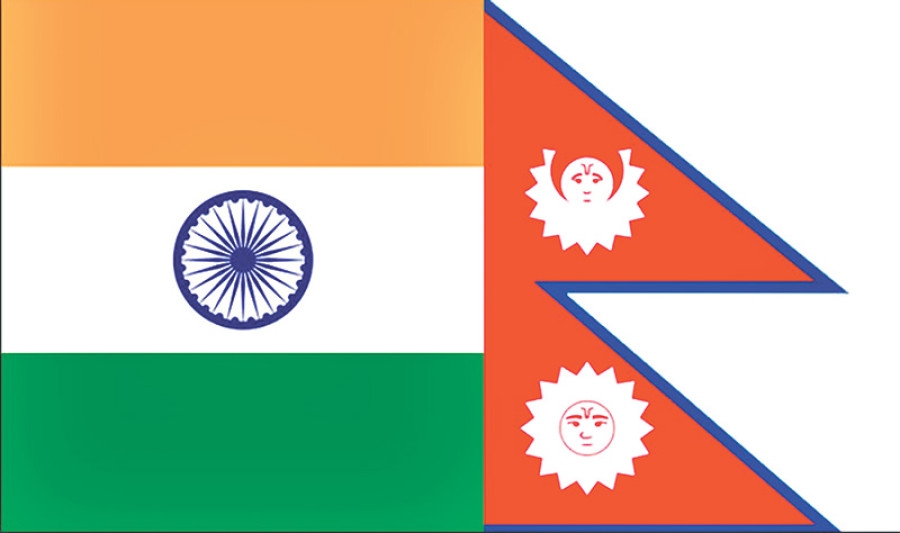
Kamal Dev Bhattarai
Prime Minister Sher Bahadur Deuba has dubbed his five-day visit to India successful. However, in reality, this visit has no substantive outcome. It was just a continuation of high-level exchanges between Nepal and India. The only positive indication of the visit was that the political leadership of both countries appear keen to resolve long-standing bilateral issues which frequently strain ties. Leaders of both countries seem to recognise the need for retrospection and additional measures. Of late, there has been a regular exchange of bilateral visits between the two countries.
Minimal progress
Indian Minister for External Affairs Sushma Swaraj visited Kathmandu to participate in The Bay of Bengal Initiative for Multi-Sectoral Technical and Economic Cooperation (Bimstec) ministerial level meeting. Swaraj also used the opportunity to interact with political leaders, with CPN-UML Chairman KP Oli as the only exception. Swaraj also discussed the agenda for PM Deuba’s visit to India. Soon after becoming Foreign Minister, Krishna Bahadur Mahara visited India and submitted a non-paper mentioning the problems faced by Nepal in various sectors.
Indian Railway Minister Suresh Prabhu visited Nepal in February and proposed a direct railway link between Kathmandu-Delhi and Kathmandu-Kolkata. Indian Finance Minister Arun Jaitly also visited Nepal in March to participate in an investment summit and assured more Indian investment in Nepal. Similarly, there are regular meetings of bilateral mechanisms at the bureaucratic level.
Indian President Pranab Mukherjee visited Nepal in November last year and Nepal President Bidya Devi Bhandari visited India in February this year. Three years ago Modi visited Nepal in his capacity as the Indian Prime Minister.
However, the intense political engagement has not been fruitful when it comes to sorting out several pending bilateral issues. All the high-level visits revolve around the same old issues which have remained unresolved for the past several years. While these high-level visits reflect the importance each country affords to the other, they do not prioritise outstanding bilateral issues.
During Dahal’s visit last year, both countries agreed to set up a joint mechanism to deal with problems faced by bilateral development projects. The mechanism is making some progress but it has not been very satisfactory. There are more than two-dozen bilateral issues that need to be sorted out immediately.
For mutual benefit
One positive outcome of PM Deuba’s recent visit was the discussion with Indian PM Modi regarding the bottlenecks in some big development projects for trade and connectivity. The bureaucracy of both countries has been instructed to finalise a Detailed Project Report within a month.
The two PMs also discussed the Arun-3 hydro project; PM Deuba has invited Indian PM Modi to visit Nepal to inaugurate the Arun-3 project. This project has stalled for the past two decades and received a fresh push when PM Modi visited Nepal in 2014. The major bone of contention is the use of water resources, energy production, cost sharing, funding arrangements and construction modalities. The need of the hour is productive talks at the political level on key issues; a joint expert group should also be formed.
There is strong opposition in the Indian state of Uttarakhand regarding the Pancheshwar Multipurpose Project as well. According to state government data, the dam which will be built under the project will submerge 60 villages and displace 31,000 families in Uttarkhand. So reaching an agreement appears to be a challenging task.
There is a need to resolve all outstanding issues as soon as possible, so bilateral relations can progress on a mutually beneficial path. Currently, while top political leaders of both countries seem positive in resolving outstanding issues, the bureaucracy has been unable to come to an amicable consensus.
Now, Nepal and India should embark on a journey where they can discover new areas of cooperation for economic prosperity together. Both countries have to think about a forward-looking bilateral relation framework instead of spending time and energy on age-old issues. Immediate measures must be taken by the political leadership to build an environment of trust and move forward.
Though understandings may be reached at the political level, they will carry no meaning if they are not reflected at the executive and bureaucratic level. So, the bureaucracy has to work in a way that will yield results.
Political leaders, bureaucratic officials, the media, and opinion makers in Delhi should realise that without resolving some outstanding issues related to the border, trade and connectivity, and development projects, the relationship between India and Nepal cannot be cordial. There are more than a dozen issues that need to be resolved without delay if we want to build a cordial relation between two countries.
Bhattarai is a political reporter at The Kathmandu Post




 10.12°C Kathmandu
10.12°C Kathmandu
